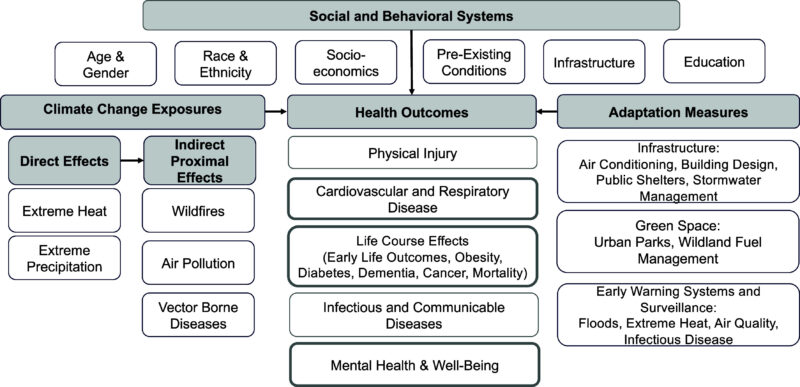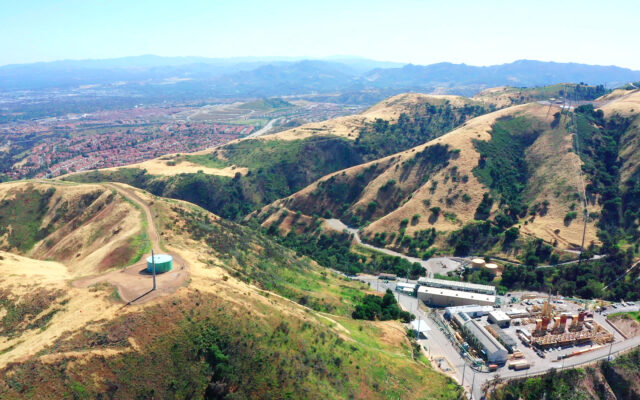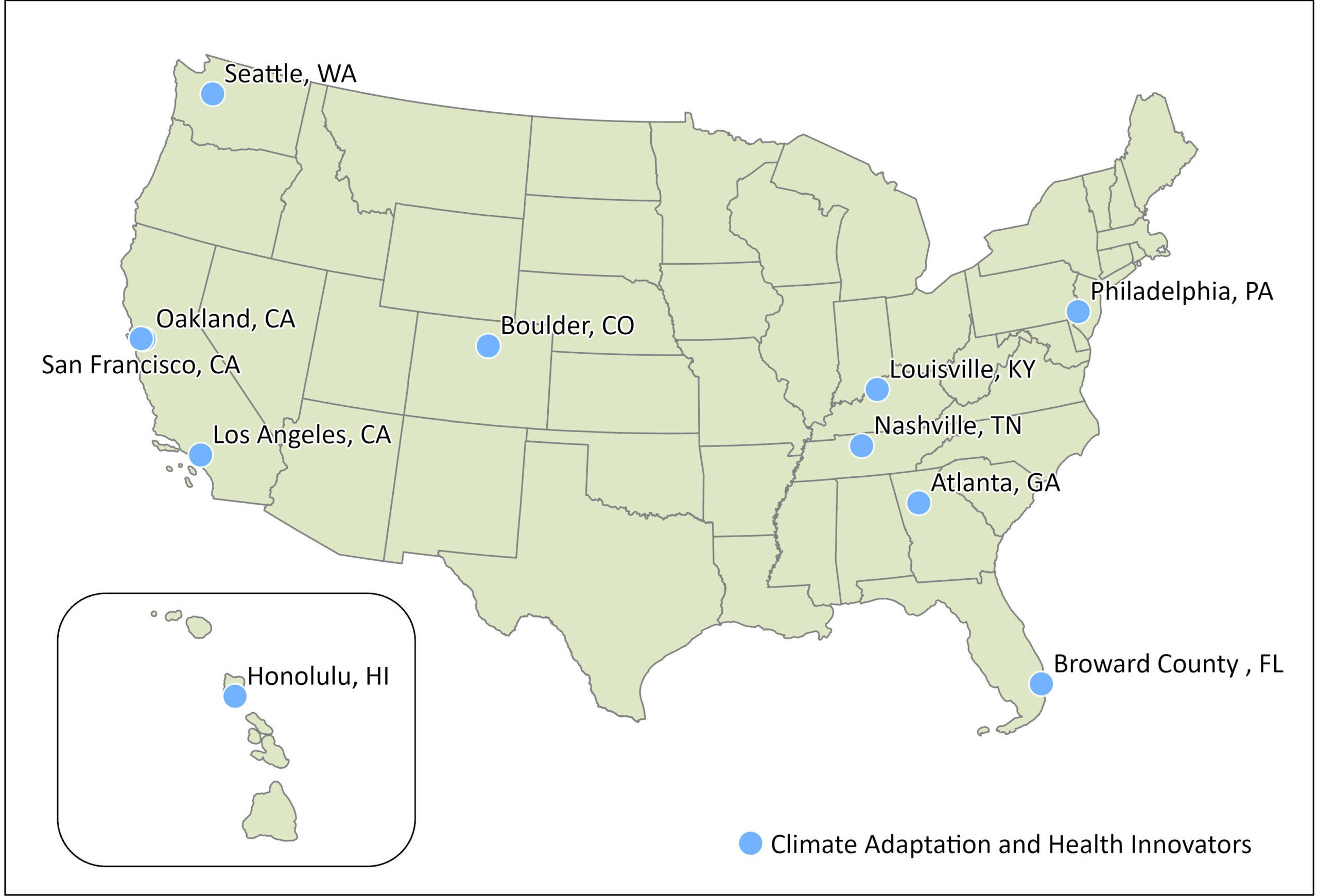Evaluating Interventions
Cumulative impacts
The frequency and intensity of climate hazard exposures in California have increased over the past several decades, a trend that is expected to continue under future climate change scenarios. Multiple climate-related stressors, also referred to as compound climate events, consider exposure to two or more co-occurring climate hazards at the same place and time. C-Solutions is characterizing the joint effect of multiple climate-related stressors and the differences among potentially vulnerable communities in different regions of California. We produced a literature review of the combined impact of multiple climate stressors on health outcomes, and mapped regional variations in heat, air pollution, wildfires, and precipitation extremes across California over the past fifteen years. These exposures will be linked to multiple health outcomes to evaluate how social determinants of health and long-term patterns of climate stressors modify health risk for different populations.

Green infrastructure

Modeling and calculating the public health impacts of climate policies
Effective management strategies for open space (natural and working lands) to mitigate climate impacts could impart health co-benefits. To better understand historic and future impacts, we quantified health and economic effects of wildfires and urban green space through scoping reviews, health impact assessments, and validated atmospheric exposure modeling. Estimates were consolidated into various tools that allow users to quantitatively assess the potential benefits associated with various hypothetical land management scenarios. Results will help to inform future policy-making and management strategies for these natural and working lands.
Quantifying health benefits of green space
With funding from Urban Institute’s Powering Healthy Lives initiative, we partnered with the Prevention Institute to explore the relationship between the availability of green space and parks with life expectancy in LA County. The findings of this study, the first to connect small-area life expectancy to green space, suggest that even a marginal increase in access to park acreage has the potential for considerable life expectancy gains in park-poor census tracts. Increasing park acreage can lead to a gain of approximately 164,700 years in life expectancy across the population of LA County, with 118,000 years of gains accruing to Black and Latinx neighborhoods. These findings are advancing health equity and climate justice through stronger evidence on the benefits of green infrastructure investments, especially in disadvantaged communities where existing inequities in park access persist.
Energy transition from fossil fuels to renewables

Aliso Canyon Disaster Health Research Study
The Aliso Canyon Disaster Health Research Study is assessing the short- and long-term effects of the catastrophic natural gas well blowout on the health of communities living and working nearby. As the study findings are released, researchers engage with community residents and other stakeholders in a series of public meetings. For more information on the study, click here.
Appliance electrification and indoor air
The Cooking Electrification and Ventilation Improvements for Children’s Asthma (CEVICA) study investigates the effects of interventions designed to reduce cooking-related pollutant exposures. This study aims to improve respiratory health of children with asthma who live in under-resourced households with natural gas cooking equipment. In partnership with the Lawrence Berkeley National Laboratories (LBNL), this study will investigate three interventions: (1) shifting cooking from gas to electric appliances, (2) ensuring adequate kitchen ventilation and providing education on effective use, and (3) providing indoor air quality information combined with portable air filtration units.

Policy analysis
City Action Toolkit for Policymakers
We are interviewing local government sustainability and climate officials in cities across the U.S. to distill lessons learned and key takeaways from their experiences implementing climate policies, then will evaluate the benefits and feasibility of implementing similar policies in other cities. With these insights, we provide a City Action Toolkit for decision makers to implement the most effective climate solutions in cities.

Evaluating the Impacts of Heat Warning Systems
Heat warning systems can help prevent health impacts by alerting the public the dangers of heat exposure and urging individuals to take protective measures. For heat warning systems to be effective, they must be continuously evaluated and improved. We are reviewing studies that evaluate the impacts of heat warning systems, including rates of protective behavior change and reductions in heat-related mortality and morbidity to identify what characteristics make them successful. These findings will help inform improvements in future heat warning systems.
